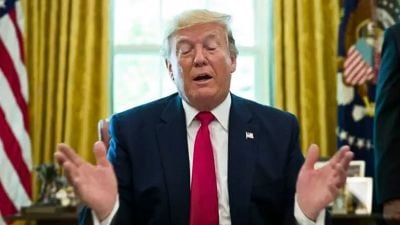Tide of paper swamps wireless signal
When tech entrepreneur Jayesh Thakkar geared to connect computers—without wires—20 km away in two Vadodara offices, his corporate ...

When tech entrepreneur Jayesh Thakkar geared to connect computers—without wires—20 km away in two Vadodara offices, his corporate client first applied for a licence.
They have been waiting for a year.
At Mumbai, a construction giant is waiting since nine months for permission to wirelessly connect offices in two suburbs.
From Philadelphia to little boroughs in the UK, governments are studying how to cover entire cities with a wireless mesh for high-speed Internet access on computers, laptops and cellphones.
The transformative age of wireless computing—Wireless Fidelity or WiFi—arrived long ago. Elsewhere.
Back home, the birth of WiFi in metros has begun to great excitement but for most outdoor usage it’s pitted against a licence raj and paperwork.
‘‘Most big corporates stay away from outdoor WiFi use because licences are cumbersome and bureaucratic,’’ says Thakkar, director, JayRaj Exim, a company WiFi-enabling offices in Mumbai. ‘‘By the time a licence arrives, what if the technology is outdated?’’
Thakkar wastes a year waiting while multiple copies of applications wade past red-tape in Delhi if a company in Gujarat or Maharashtra wants to extend indoor WiFi application to a wide area network. That done, employees could log on to data in two offices with just one login and password.
Thakkar has managed a dozen licences mostly thanks to a ‘‘syndicate of agents.’’
Before buying equipment, he says he waits for an ‘in-principle’ clearance from the Wireless Planning and Coordination Wing of the Department of Telecommunications and a visit by the local police.
‘‘Next, the standing advisory committee on radio frequency allocation must agree,’’ he says. ‘‘Sometimes they meet once in two months and your application doesn’t come up that day. We provide 30-35 application copies for all members.’’
Then he waits for an operating licence.
|
Wireless license,
strings attached |
|||||
|
• Applications go to the Wireless Planning and Coordination wing, Delhi |
|||||
Many WiFi believers who appealed long and hard to free WiFi from regulations so telecom and Internet services reach rural India—at a fraction of usual costs—are disappointed though the government has been steadily freeing WiFi licensing restrictions since 2002.
‘‘The government agreed, in principle, to delicence low-power outdoor use of WiFi in December, but where is the notification to make this official?’’ says Arun Mehta, cyber rights activist and telecom consultant.
When contacted, a ministry official said that spectrum availability is the real problem. ‘‘As and when more spectrum is available, we’ll be able to give out more frequencies. Till then, WiFi will have to be restricted to ‘confined areas’,’’ he said.
Officially permitted outdoor use would take WiFi to rural India, where it is needed most. Potential applications include telemedicine, long-distance education and networked community portals.
‘‘In many nations, the 2.4GHz WiFi band or even 5GHz is fully delicenced for indoor and outdoor use,’’ says Muthu Logan, CEO BroVis Wireless Networks, Chennai, which has corporate headquarters in Cupertino, California.
‘‘This spawned a healthy growth of cost-effective public, private wireless networks,’’ says Logan. ‘‘Demand for applications in music, video streaming, instant conferencing has gone up.’’
What we need is WiFi in the community, Mehta maintains. ‘‘Why is it taking so long to free people to place their own WiFi antennae? This would create a network of towers providing Internet access at zero cost.’’
The industry buzzes that outdoor WiFi licensing will ease by March-end. But techies also worry whether the IT Act of 2000 meant to ‘‘promote the spread and use of Internet technologies’’ can protect legitimate WiFi users.
‘‘People setting up WiFi hotspots will be responsible to maintain them and for legal hurdles because of using them,’’ says IT advocate and cyberspace expert Pawan Duggal.
‘‘Anyone can park a car, pick up a WiFi signal, hack data, send threatening email, surf illicit content and never be found,’’ says Duggal. ‘‘The person hauled to court will be the guy wo set up his home with WiFi and shared the network.’’
Experts advise caution with outdoor WiFi (except where’s it’s currently provided at educational campuses etc) until the IT Act weaves in such eventualities. Presently unlicensed WiFi use is permitted only at 2.5GHz bandwidth, indoors.
Photos





- 01
- 02
- 03
- 04
- 05


























